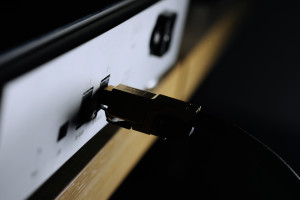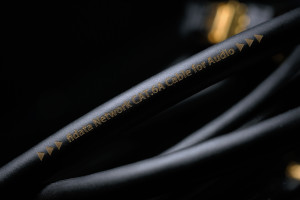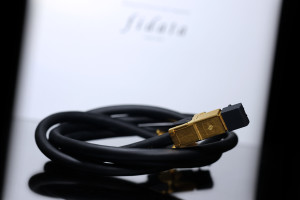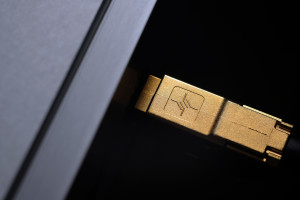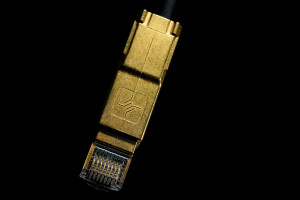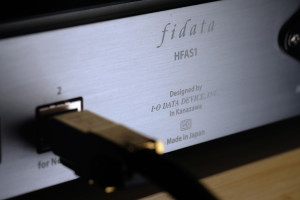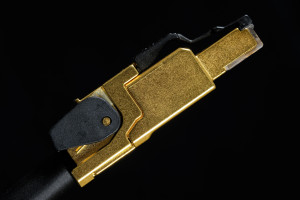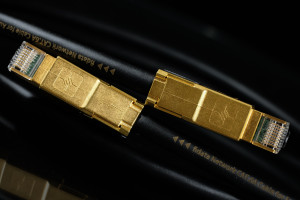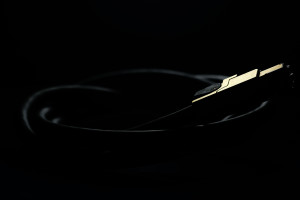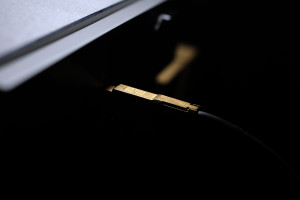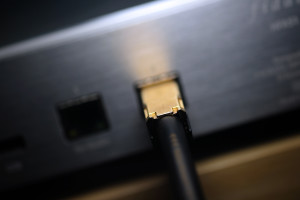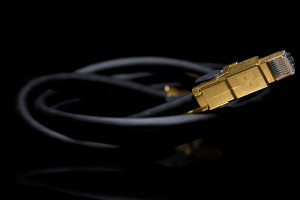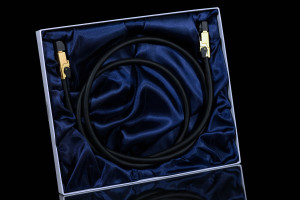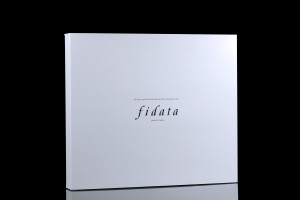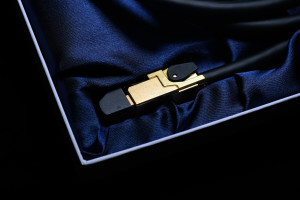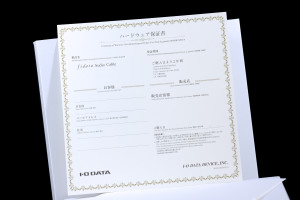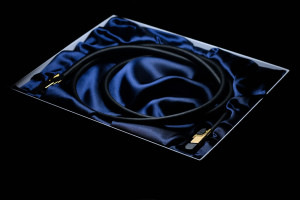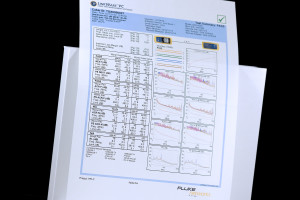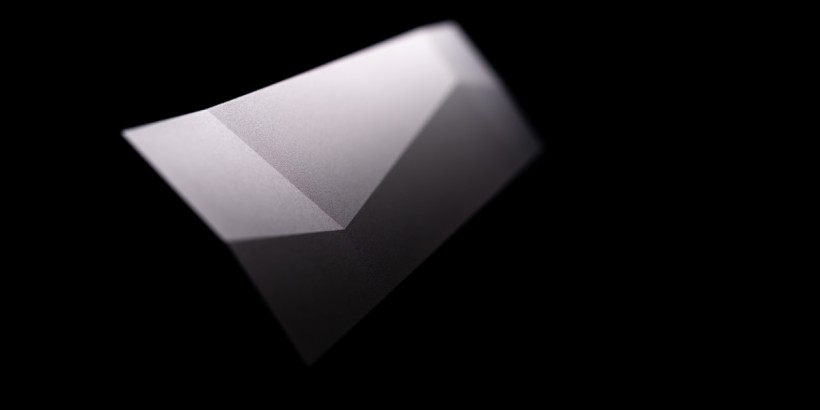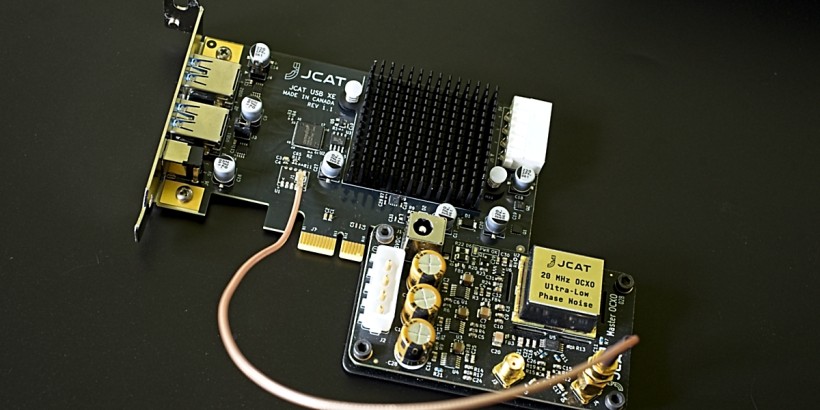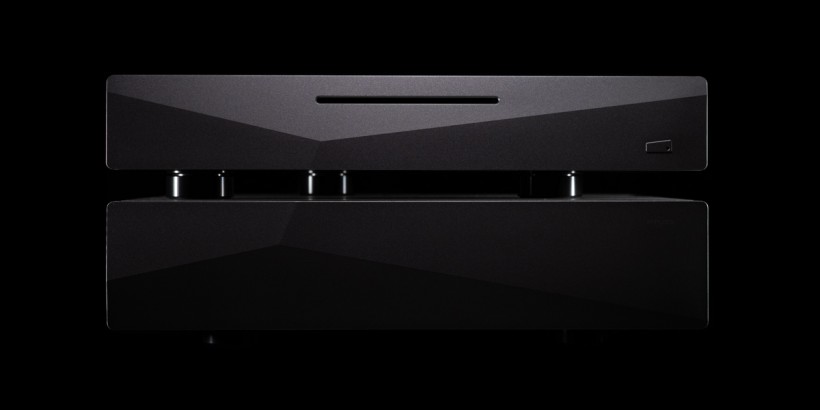The big cardboard from Japan hid not one but three products in total. Shortly after crossing Fidata HFAS1-XS20U off this list, two items awaited for their turn and that’s how one of them – Fidata HFLC LAN cable – became this review’s hero in the process. Enjoy!
Introduction
Of all three goods delivered, Fidata HFAS1-XS20U surely was the most interesting one and for a number of valid reasons, though Japanese cables craved for attention as well. It quickly turned out that there was more to them than met the eye. Come to think of it, I shouldn’t be too surprised. Japanese audio hardware frequently looks, works and feels very much like stuff made by perfectionists. You know, those people who usually don’t talk much about their products, listen to a lot of music and are known for fanatical attention to details skipped by almost everyone else. Put shortly, the industry people from Japan I’m familiar with aren’t into the half-hearted game at all, which translates to usually rather surprising effect additionally amplified via inconspicuous visuals, whereas main Fidata products fit this description perfectly and additional examples can be easily multiplied.
 The current Fidata lineup consists of HFAS1-S10U and HFAS1-XS20U servers/streamers and two digital cables: HFLC (LAN) and HFU2 (USB). All these items were designed to work in complimentary and logical fashion. But in order to get the bigger picture, let’s take a quick look at Combak Corporation’s subsidiary brands; Reimyo, Harmonix, Hijiri, Bravo, Encore and Enacom. Their products are both big and vital and also far smaller tuners. The man behind these – Kazuo Kiuchi – said to me once that an audio system he sees as a metaphorically very much alive being filled with important organs no matter their size or function. Being perfectly aware of the audio industry’s nebulous marketing fluff, if I’d heard such a statement not knowing this gent, I’d probably only smiled mischievously. But past several convos with Kiuchi-san I simply understood that his work he truly sees as a series of small yet mutually interacting cogs of a far larger mechanism. People familiar with Reimyo hardware usually agree that accessories by the same designer extract musical goodness from it in most cases better than their competitors.
The current Fidata lineup consists of HFAS1-S10U and HFAS1-XS20U servers/streamers and two digital cables: HFLC (LAN) and HFU2 (USB). All these items were designed to work in complimentary and logical fashion. But in order to get the bigger picture, let’s take a quick look at Combak Corporation’s subsidiary brands; Reimyo, Harmonix, Hijiri, Bravo, Encore and Enacom. Their products are both big and vital and also far smaller tuners. The man behind these – Kazuo Kiuchi – said to me once that an audio system he sees as a metaphorically very much alive being filled with important organs no matter their size or function. Being perfectly aware of the audio industry’s nebulous marketing fluff, if I’d heard such a statement not knowing this gent, I’d probably only smiled mischievously. But past several convos with Kiuchi-san I simply understood that his work he truly sees as a series of small yet mutually interacting cogs of a far larger mechanism. People familiar with Reimyo hardware usually agree that accessories by the same designer extract musical goodness from it in most cases better than their competitors.
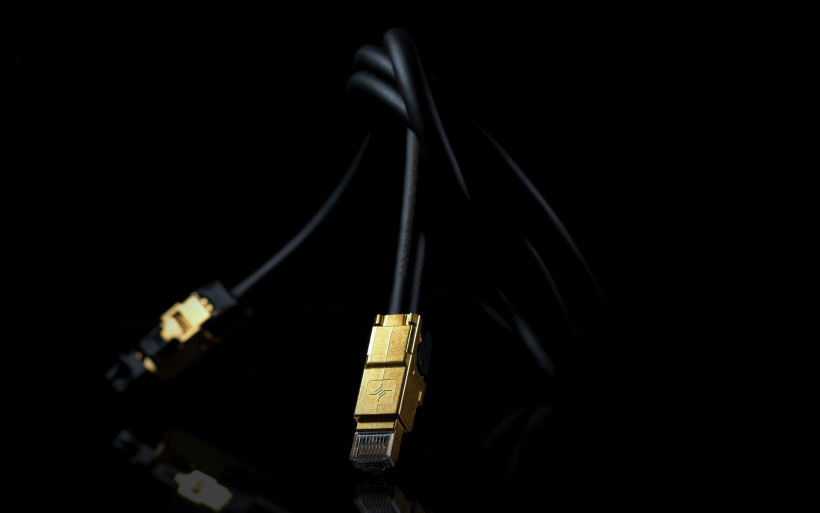 The more audio products by the same operation I review, the more connections and patterns within its portfolio I notice. In most cases these are logical steps forward and not merely marketing moves associated with simply growing bigger and that’s it. It’s far too easy to be skeptic, whereas in reality to sit down in the hot seat and have a listen seems to be far more difficult. Quite the paradox, isn’t it? It should’ve been the other way around. In any case, after getting familiar with the whole Fidata range the conclusion is that this operation’s cables are not separate beings but proper extensions of its key components. I haven’t asked Sugimori-san of Fidata about its philosophy. Nonetheless it very much resembles what the Combak Corporation’s main man has been doing for years already. It’s safe to say that their common Japanese mentality was my angle this time around, but that’s not the best part. The former individual informed me that Fidata HFLC works the best in-between the same manufacturer’s big box and a separate streamer which I hadn’t had on hand. The only thing I could do was to connect my router to the HFAS1-XS20U via this very cable and witness what happens next in the process. Put shortly it happened, yes it did.
The more audio products by the same operation I review, the more connections and patterns within its portfolio I notice. In most cases these are logical steps forward and not merely marketing moves associated with simply growing bigger and that’s it. It’s far too easy to be skeptic, whereas in reality to sit down in the hot seat and have a listen seems to be far more difficult. Quite the paradox, isn’t it? It should’ve been the other way around. In any case, after getting familiar with the whole Fidata range the conclusion is that this operation’s cables are not separate beings but proper extensions of its key components. I haven’t asked Sugimori-san of Fidata about its philosophy. Nonetheless it very much resembles what the Combak Corporation’s main man has been doing for years already. It’s safe to say that their common Japanese mentality was my angle this time around, but that’s not the best part. The former individual informed me that Fidata HFLC works the best in-between the same manufacturer’s big box and a separate streamer which I hadn’t had on hand. The only thing I could do was to connect my router to the HFAS1-XS20U via this very cable and witness what happens next in the process. Put shortly it happened, yes it did.
Build
Fidata HFLC arrived in a fancy box filled with silk alike fabric. A box is a box and nothing else, after a minute to a drawer it goes and isn’t used ever since. Still, it’s nice to see that the Japanese team took some effor on this count too. Both warranty and measurements cards indicate aesthetic and professional job. As a part of the package, the former is nothing uncommon. The latter though? On the contrary. In any case, there was no reason to be picky, not even one. Well done!
 Fidata HFLC is a LAN cable compliant with CAT7 specification unofficially, although has its shielding removed to reduce noise, which makes it a CAT6A product. It’s based on terrific RJ45 plugs made by Telegärtner. These gold plated terminations are known as MFP8. The 7mm thick cable holds eight 26AWG silver plated copper conductors in total.
Fidata HFLC is a LAN cable compliant with CAT7 specification unofficially, although has its shielding removed to reduce noise, which makes it a CAT6A product. It’s based on terrific RJ45 plugs made by Telegärtner. These gold plated terminations are known as MFP8. The 7mm thick cable holds eight 26AWG silver plated copper conductors in total.
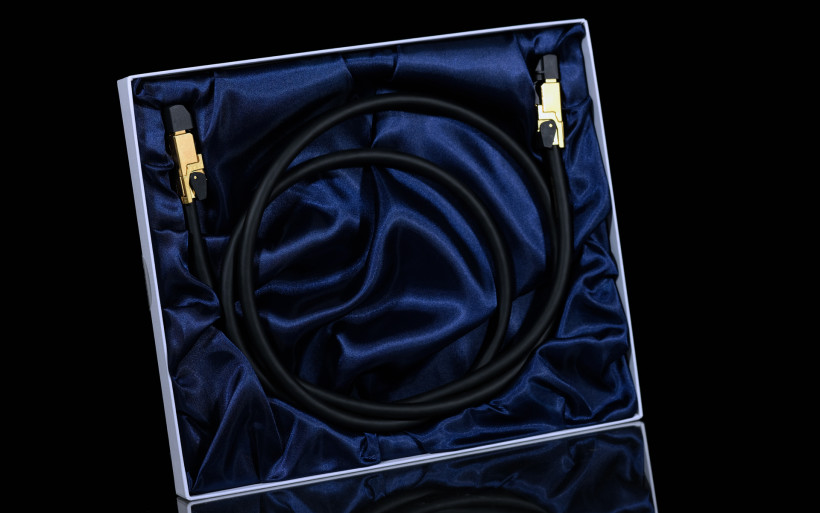 Arrows found on the outer insulation inply that Fidata HFLC is a directional product, whereas the ‘fidata’ branding in there gives a reason to think that the Japanese team might develop and manufacture its own cable. The HFLC is flexible and easy to use and its RJ45 plugs fit in perfectly. In general, I’ve found not a single reason to be displeased, although one small change I’d do. Instead of rather industrially looking rubbery outer cover I’d very much would like to see something posher along the lines of i.e. Techflex nylon multifilament sleeving. But that’s my subjective wish, thus nothing of importance.
Arrows found on the outer insulation inply that Fidata HFLC is a directional product, whereas the ‘fidata’ branding in there gives a reason to think that the Japanese team might develop and manufacture its own cable. The HFLC is flexible and easy to use and its RJ45 plugs fit in perfectly. In general, I’ve found not a single reason to be displeased, although one small change I’d do. Instead of rather industrially looking rubbery outer cover I’d very much would like to see something posher along the lines of i.e. Techflex nylon multifilament sleeving. But that’s my subjective wish, thus nothing of importance.
Sound
In order to review Fidata HFLC I’ve used my trusty old Linksys WRT160N router powered via its stock SMPS critter. The Japanese cable was put in-between this box and Fidata’s own HFAS1-XS20U server/streamer, which passed signal upstream to my LampizatOr Pacific (KR Audio 5U4G 2016 Ltd. Ed. + KR Audio T-100), then either to Trilogy 925 or Kinki Audio EX-M1 integrated amps and lastly to Boenicke W8 floorstanders. Fidata HFLC skirmished with a regular LAN throwaway of the same length.
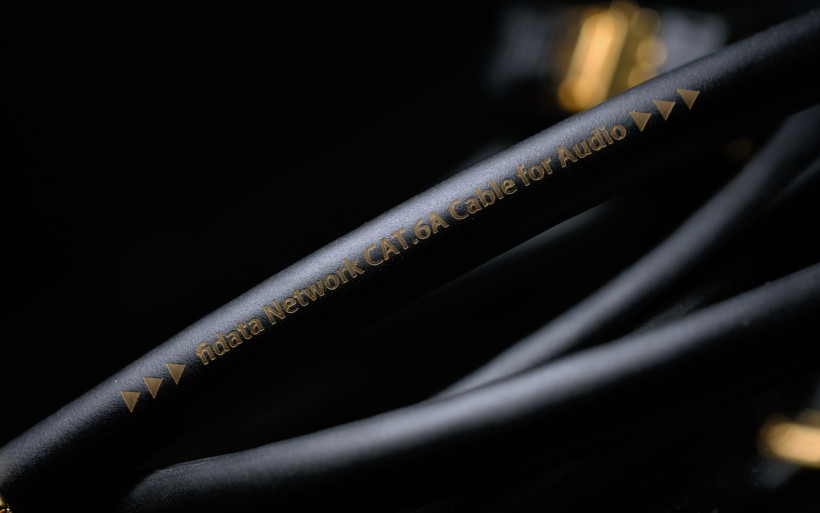 I confess that I forgot about Fidata cables completely. Shortly past unpacking the Japanese box with three products inside (Fidata’s HFAS1-XS20U, HFLC and HFU2), all these landed in my setup right away. The server/streamer was the main dish whereas everything else served on the side was not touched for weeks. Those were ‘just’ cables on duty. If any good are a part of my setup I’m happy and if they aren’t not a tear is shed, especially if tastier things are on the menu. Once the HFAS1-XS20U assignment was crossed off the to-do list, it was high time to finally get down to Fidata HFLC.
I confess that I forgot about Fidata cables completely. Shortly past unpacking the Japanese box with three products inside (Fidata’s HFAS1-XS20U, HFLC and HFU2), all these landed in my setup right away. The server/streamer was the main dish whereas everything else served on the side was not touched for weeks. Those were ‘just’ cables on duty. If any good are a part of my setup I’m happy and if they aren’t not a tear is shed, especially if tastier things are on the menu. Once the HFAS1-XS20U assignment was crossed off the to-do list, it was high time to finally get down to Fidata HFLC.
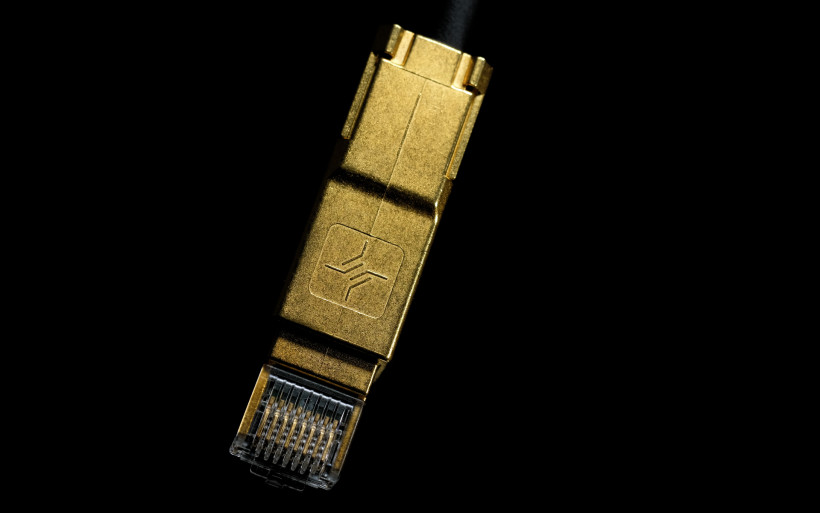 This reporter’s expectations towards Fidata HFLC were non-existent. No optimism or prejudice were on, albeit mildly skeptical thought or two appeared instead. For a reason, though. The product worked in-between the same company’s big machine and my router, therefore was a part of a wireless UI scheme and not in the audio chain directly. That’s why it seemed reasonable to assume that the HFLC’s input on sound would be minimal at best if any at all. That’s what this scribe’s common sense indicated, whereas it turned out rather quickly that theory and practice didn’t go hand in hand this time around. After taking into account that the HFLC job was this reporter’s very first one with RJ45 accessories involved, this came as a major surprise.
This reporter’s expectations towards Fidata HFLC were non-existent. No optimism or prejudice were on, albeit mildly skeptical thought or two appeared instead. For a reason, though. The product worked in-between the same company’s big machine and my router, therefore was a part of a wireless UI scheme and not in the audio chain directly. That’s why it seemed reasonable to assume that the HFLC’s input on sound would be minimal at best if any at all. That’s what this scribe’s common sense indicated, whereas it turned out rather quickly that theory and practice didn’t go hand in hand this time around. After taking into account that the HFLC job was this reporter’s very first one with RJ45 accessories involved, this came as a major surprise.
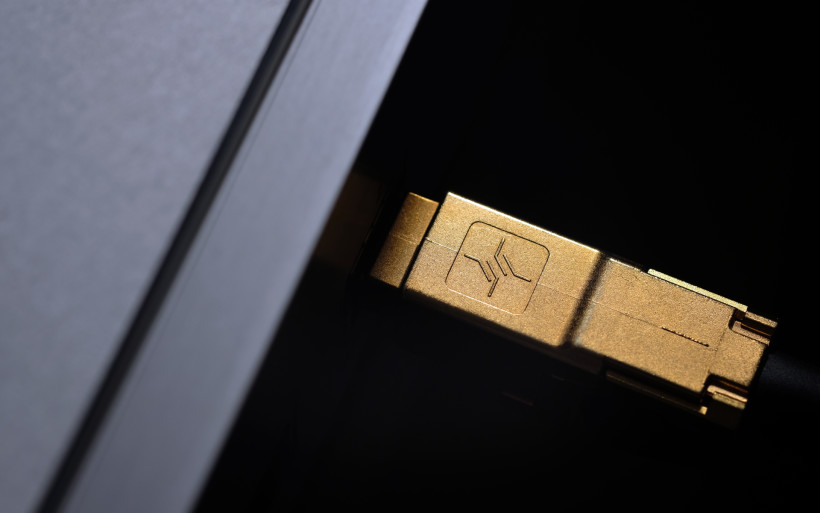 Getting familiar with various cables is pretty much similar process in my case. The non-analytical mindset which kicks in early on involves eyes closed and simply listening to favourite repertoire without focus on details, individual instruments, certain frequency range or any dissection at all. Music absorbed like so tastes the best. One well recorded and perfectly known track is auditioned about three times, then there’s a short break followed by necessary leash swap and this process is then repeated several times. Sooner or later any differences there are start to reveal themselves, morph from subtle to more audible, the idea of what a given product does is grasped and additional tracks played as described above either confirm these findings or introduce even more changes. Once this procedure executed in the usual manner nets no firm and concrete effect and everything sounds the same, then we have a problem. Cable comparisons are rather unpredictable, far from easy and the sooner I’m able to wrap my ears around a cable in my setup, the better. Long story’s short, the Fidata HFLC job was a breeze. To my great surprise this one arrived instantly.
Getting familiar with various cables is pretty much similar process in my case. The non-analytical mindset which kicks in early on involves eyes closed and simply listening to favourite repertoire without focus on details, individual instruments, certain frequency range or any dissection at all. Music absorbed like so tastes the best. One well recorded and perfectly known track is auditioned about three times, then there’s a short break followed by necessary leash swap and this process is then repeated several times. Sooner or later any differences there are start to reveal themselves, morph from subtle to more audible, the idea of what a given product does is grasped and additional tracks played as described above either confirm these findings or introduce even more changes. Once this procedure executed in the usual manner nets no firm and concrete effect and everything sounds the same, then we have a problem. Cable comparisons are rather unpredictable, far from easy and the sooner I’m able to wrap my ears around a cable in my setup, the better. Long story’s short, the Fidata HFLC job was a breeze. To my great surprise this one arrived instantly.
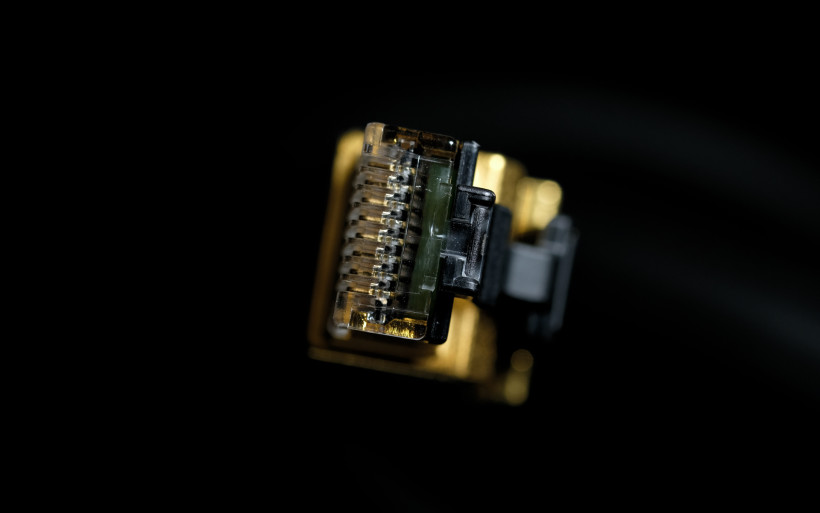 The Japanese cable properly introduced itself in my setup right away. Actually there was no waiting time involved at all as merely one swap to the regular LAN throwaway instantaneously netted a different and far worse result albeit a precise one in its nature. This gave me a lot to think about. Past the initial experience several back and forths followed and auditions based on well known tracks resulted in the same distinctive shift each and every time. After about two hours of cable tweakery I was able to fully grasp the outcome and all uncertainties were gone. To be perfectly clear, audible changes weren’t shocking but of ‘a bit here and a bit there too’ type instead, though combined they upped the quality ante significantly indeed, yet that’s not the main takeaway. The Japanese cable introduced all changes quickly, swiftly and without a hint of struggle on my end… even though it wasn’t a part of the audio chain. This was the biggest surprise of them all.
The Japanese cable properly introduced itself in my setup right away. Actually there was no waiting time involved at all as merely one swap to the regular LAN throwaway instantaneously netted a different and far worse result albeit a precise one in its nature. This gave me a lot to think about. Past the initial experience several back and forths followed and auditions based on well known tracks resulted in the same distinctive shift each and every time. After about two hours of cable tweakery I was able to fully grasp the outcome and all uncertainties were gone. To be perfectly clear, audible changes weren’t shocking but of ‘a bit here and a bit there too’ type instead, though combined they upped the quality ante significantly indeed, yet that’s not the main takeaway. The Japanese cable introduced all changes quickly, swiftly and without a hint of struggle on my end… even though it wasn’t a part of the audio chain. This was the biggest surprise of them all.
 My listening room is – dare I say – nasty. Low ceiling and acoustic limitations due to sharing it with another person surely doesn’t help. The quite safe hot seat aside, vented boxes sport either too much or too little bass from location any different than the hot one. That’s usually not their fault, my reference floorstanders are a perfect example and what Fidata HFLC did to them was very surprising and desired. In comparison to the regular LAN cable, the Japanese loaner reduced boom significantly via trimming the wobble invoking excess in upper bass parts, grasped everything below more tightly and the effect was respectable. These two shifts translated to view more visible, clearer and fatigue-free. But most importantly there was no question whether such alterations took place. Regular cable sported bass literally all over the place in many recordings, whereas this review’s star handled it like a true champ.
My listening room is – dare I say – nasty. Low ceiling and acoustic limitations due to sharing it with another person surely doesn’t help. The quite safe hot seat aside, vented boxes sport either too much or too little bass from location any different than the hot one. That’s usually not their fault, my reference floorstanders are a perfect example and what Fidata HFLC did to them was very surprising and desired. In comparison to the regular LAN cable, the Japanese loaner reduced boom significantly via trimming the wobble invoking excess in upper bass parts, grasped everything below more tightly and the effect was respectable. These two shifts translated to view more visible, clearer and fatigue-free. But most importantly there was no question whether such alterations took place. Regular cable sported bass literally all over the place in many recordings, whereas this review’s star handled it like a true champ.
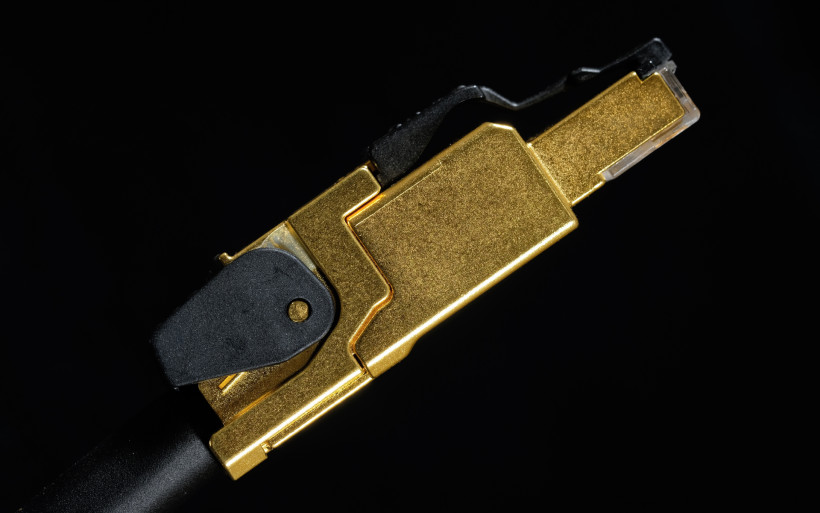 Moving on, Fidata HFLC provided the sorting service in its nature very similar to USB cables and reclockers. In comparison to the stock LAN cable, the Japanese specimen sounded smoother, more vivid and pleasant, it singled out instruments far easier thus better and had its tonal balance slightly moved downwards. It was perfectly calm whereas its competitor I’ve found far hotter, shoutier and plainly rude in general. The former also decayed far better, injected mass into percussion swings and wasn’t abnormally lit up. Top notch bass service aside, smoothness in the whole audible FR was mapped as the second prominent virtue. Fidata HFLC’s more mannerly and sophisticated approach was unequivocally better than its rival’s clamorous and twitchy attitude. Poorly recorded rock/metal material the Japanese product reworked to showcase in better light yet didn’t put price for its service at all. It acted along the lines of a skilled makeup artist during the no charge day. In spite of slight liposuction downstairs, dynamically expansive, punchy and momentum driven music it served like so without any sensible limitations, whereas the whole wall of orderly sound was the outcome of background darker than with regular cable. Let me stress again that all differences described up above weren’t particularly intense when singled out, though as a package sent the perfectly understandable message. The usual $1 suspect should end in a trash bin and nowhere else.
Moving on, Fidata HFLC provided the sorting service in its nature very similar to USB cables and reclockers. In comparison to the stock LAN cable, the Japanese specimen sounded smoother, more vivid and pleasant, it singled out instruments far easier thus better and had its tonal balance slightly moved downwards. It was perfectly calm whereas its competitor I’ve found far hotter, shoutier and plainly rude in general. The former also decayed far better, injected mass into percussion swings and wasn’t abnormally lit up. Top notch bass service aside, smoothness in the whole audible FR was mapped as the second prominent virtue. Fidata HFLC’s more mannerly and sophisticated approach was unequivocally better than its rival’s clamorous and twitchy attitude. Poorly recorded rock/metal material the Japanese product reworked to showcase in better light yet didn’t put price for its service at all. It acted along the lines of a skilled makeup artist during the no charge day. In spite of slight liposuction downstairs, dynamically expansive, punchy and momentum driven music it served like so without any sensible limitations, whereas the whole wall of orderly sound was the outcome of background darker than with regular cable. Let me stress again that all differences described up above weren’t particularly intense when singled out, though as a package sent the perfectly understandable message. The usual $1 suspect should end in a trash bin and nowhere else.
Summary
The adventure described above ended with a rather unexpected result, even though common sense, mild skepticism and in general cautious attitude indicated otherwise. All this is in the past now and Fidata HFLC led this reporter to several conclusions he can’t and won’t ignore or diminish. This LAN cable works as intended, which might come as quite the surprise to many people, yet to me it doesn’t. Not any longer. But the important bit is its potent contribution to sound. When alone, each introduced improvement seemed mild at best, though all at once proved to be very audible. Fidata HFLC made music to flow better: more easygoing, sorted, clearer and smoother yet not overly lit up or edgy at all. That’s valuable.
Fidata HFLC on the job in-between a regular router and the HFAS1-XS20U loaner wasn’t the most fortunate scenario, yet sound got audibly better nonetheless. Now I can only guess what would’ve happened if the Japanese box was used only as a storage married via this report’s cable to a separate streamer. The word is that Fidata HFLC used like so is the most potent. If its placement as sub-optimal as the one in my rig resulted in performance this good, this could’ve been very interesting indeed and hopefully one day an opportunity will arise to tackle this subject.
Fidata HFLC is far from affordable, though in the context of i.e. platforms similar to mine still priced rather sanely. Made well and capable of upping the sonic ante of LAN based setups, it’s menat for enthusiasts willing to address even as theoretically unimportant elements in their rigs as network cables. Is Fidata HFLC worth the effort and its ask? At my place, with Fidata HFAS1-XS20U and a router similar to my old but gold Linksys you betcha, at yours and with your hardware I can’t say. Yet there’s no question that it’s worth getting familiar with and to keep my inner skeptic at bay for a while, sit and have a listen was all it took to understand this. Nothing more and nothing less. ‘Till next time!
Associated equipment:
- Amplifiers: Trilogy 925, Kinki Audio EX-M1
- Sources: LampizatOr Pacific (KR Audio T-100 + KR Audio 5U4G Ltd. Ed.)
- Speakers: Boenicke Audio W8
- Transports: Fidata HFAS1-XS20U
- USB components: Fidata HFU2
- Network components:a regular $1 LAN throwaway
- Speaker cables: Forza AudioWorks Noir Concept, Audiomica Laboratory Celes Excellence, Luna Gris
- Interconnects: Forza AudioWorks Noir, Audiomica Laboratory Erys Excellence
- Power components: Gigawatt PF-2 + Gigawatt LC-2 MK2 + Forza AudioWorks Noir Concept/Audiomica Laboratory Ness Excellence
- Rack: Franc Audio Accesories Wood Block Rack
- Music: NativeDSD
Retail prices of reviewed components in EU (excl. tax):
- Fidata HFLC 1,5/3/10 meters: €860/1’100/2’590
Manufacturer: Fidata



